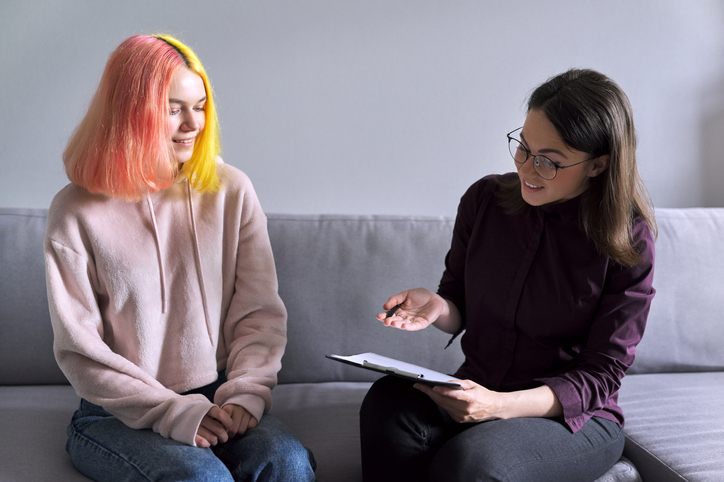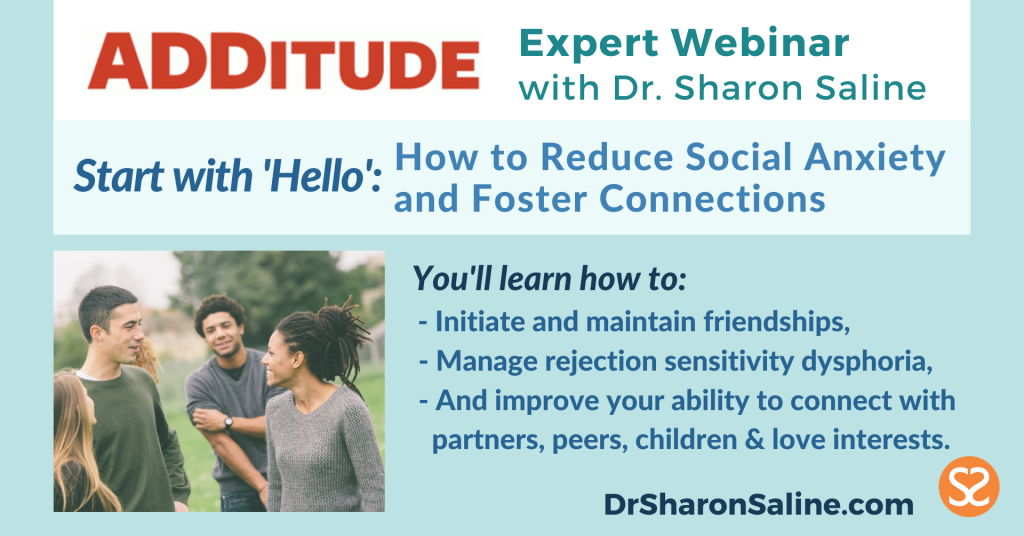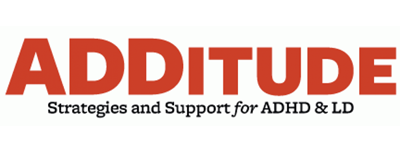 I had planned to write a blog this week on a hot topic related to ADHD–avoidance procrastination. It was outlined and researched. But, when I sat down to write, I couldn’t focus on it. My thoughts, my heart, my grief were with the people in Uvalde, Texas. How can we approach coping with these recent mass shootings? Ten days after a racist shooting in Buffalo, New York at a grocery store, and ten years after the unspeakable tragedy in Newtown, Connecticut, Americans are once again dealing with another horrific mass shooting. This small community West of San Antonio will be forever marked by this unspeakable event: parents, siblings, friends, extended family members, coworkers and neighbors whose lives will never be the same. This tragedy has also triggered, and possibly re-traumatized, thousands of people who lost loved ones at similar atrocities: Parkland High School, Sandy Hook elementary school, Columbine High School, Las Vegas, Pittsburgh, Charleston-–the list goes on and on. It’s nearly impossible not to be affected by this devastating news. In fact, it can be related to a biological response based on vicarious trauma.
I had planned to write a blog this week on a hot topic related to ADHD–avoidance procrastination. It was outlined and researched. But, when I sat down to write, I couldn’t focus on it. My thoughts, my heart, my grief were with the people in Uvalde, Texas. How can we approach coping with these recent mass shootings? Ten days after a racist shooting in Buffalo, New York at a grocery store, and ten years after the unspeakable tragedy in Newtown, Connecticut, Americans are once again dealing with another horrific mass shooting. This small community West of San Antonio will be forever marked by this unspeakable event: parents, siblings, friends, extended family members, coworkers and neighbors whose lives will never be the same. This tragedy has also triggered, and possibly re-traumatized, thousands of people who lost loved ones at similar atrocities: Parkland High School, Sandy Hook elementary school, Columbine High School, Las Vegas, Pittsburgh, Charleston-–the list goes on and on. It’s nearly impossible not to be affected by this devastating news. In fact, it can be related to a biological response based on vicarious trauma.
We grieve, again: Traumatized by mass shootings in America
 Although I live in Massachusetts, far from Texas, my heart aches for the Uvalde community. Senator Chris Murphy said tonight, “This is not inevitable.” A mother who lost a child a few years ago in a similar shooting commented that it is beyond insanity for us to continue to witness these events and offer our sympathy without any real policy change. It is inhuman. But, as these events re-occur, so many of us have become inured to these murders and to other atrocities of war and hardship across the globe. Our brains don’t have pathways to make sense of these senseless deaths. Many people feel hopeless, frustrated and powerless as we hear about the mass shootings occurring again and again. Despite the research that “84% of voters, including 77% of Republicans, support requiring all gun purchasers to go through a background check,” no legislation has been passed. How do we understand this ourselves? How do we explain this to children? The issues raised by such horrors force us to examine ourselves as a country and our values as people. We:
Although I live in Massachusetts, far from Texas, my heart aches for the Uvalde community. Senator Chris Murphy said tonight, “This is not inevitable.” A mother who lost a child a few years ago in a similar shooting commented that it is beyond insanity for us to continue to witness these events and offer our sympathy without any real policy change. It is inhuman. But, as these events re-occur, so many of us have become inured to these murders and to other atrocities of war and hardship across the globe. Our brains don’t have pathways to make sense of these senseless deaths. Many people feel hopeless, frustrated and powerless as we hear about the mass shootings occurring again and again. Despite the research that “84% of voters, including 77% of Republicans, support requiring all gun purchasers to go through a background check,” no legislation has been passed. How do we understand this ourselves? How do we explain this to children? The issues raised by such horrors force us to examine ourselves as a country and our values as people. We:
- feel shocked and afraid
- share the pain and grief we see
- are not sure how to respond because it is confusing
- reach out for comfort and to offer solace
- talk to each other
- discuss our emotions, our thoughts and our perceptions as a step towards healing.
We pray, we make food, we donate clothes, we offer hugs. And, we fight for real change.
Advice for adults and families processing senseless gun violence in America:
Here are four tips to help you cope with this latest tragedy and, if you have children, talk with them about it.
1. Process your reactions first
You may feel shut down, incredulous, enraged or devastated. If you are a survivor yourself, or you know someone who is, you may be overwhelmed with re-experiencing your own trauma. Talk about what’s going on for you with someone who cares, who understands and who will offer you the support you need. This may be a partner, a relative, a friend, a co-worker or a counselor. Due to the widespread and immediate accessibility of news through social media, you may need to limit the time you spend in front of a screen to titrate your exposure. Consider doing something that will reduce your powerlessness, such as volunteering to send food, or working with an organization towards a cause you believe in. Getting active and participating is a great antidote to feeling alienated.
2. Shield young children, and share facts with the older ones
Think about what you want to say and how you would like to present information to your child–based on their age and developmental level. Children under the age of ten can be frightened by headlines about school shootings. They can also be disturbing images related to this story or the war in the Ukraine. Nonetheless, they may hear about things from their peers. Since kids are naturally curious, and will read things that are left around, put away newspapers or magazines with potentially upsetting images or tag-lines. Give them a one or two sentence summary about what has happened so they are informed but not scared. Answer their questions honestly but not extensively: they don’t need to know a lot of details that could upset them. Try not to watch or listen to the news while they are within earshot. If they hear about what happened from other people, or express distress about it, ask them questions. In addition, be available to talk when they approach you. You might want to remind them that they are safe right now, and you and their teachers are working together to keep them safe. Listening to their feelings, and validating their concerns without solving them, helps foster the resilience they need now and later in life.
3. Be straight with middle and high schoolers
Ask your preteens and teens what they have heard and how they feel about it. Use open-ended questions, such as “What do you think about what has happened?” or “What types of concerns do you have about how this could relate to your life?” Be prepared that they may not want to discuss this at all right now, but they may have a delayed reaction and bring it up next week. Avoid oversharing details and, again, monitor the amount of news they are exposed to. They may search for things online without your knowledge, but you also don’t have to have the news on in the background while you are cooking or eating dinner. We want to limit the possibility for any secondary trauma, which can occur by seeing disturbing images repeatedly. Listen to what they have to say and validate their feelings. They know that you can’t fix things. What they want is a supportive place to discuss emotions and explore ideas. Talk about ways to get involved, as many teens like to solve problems and move into action.
4. Acknowledge bravery
Counteract all of the negative and frightening information by focusing on examples of courage and our common humanity. This will reduce despair and help you (and your kids) manage fear and anxiety. There are people who have said and done amazing things to help others during the massacre in Uvalde, the war in the Ukraine and other atrocities. There are people who have survived the losses of loved ones from a past mass shooting, who are talking about their experiences to help others. Some have started foundations and organizations dedicated to ending gun violence in schools and communities. They are our heroes: they manifest the type of humane, compassionate values we aim to live by and want our children to emulate. Share their stories–with your kids, with your friends, with anyone who will listen. Their courage is an inspiration for all of us. Today, my thoughts and prayers are not only with the families in Uvalde, and also with families everywhere who have lost a beloved son, daughter, spouse, parent or relative. May the memory of those lost be a blessing to us all.
Donate to verified fundraisers on gofundme.com:
Texas Elementary School Shooting Relief
Buffalo Mass Shooting Fundraisers

Read more blog posts:
- Managing Uncertainty With Your Family During COVID-19: More than deep breathing
- Beyond ADHD Pandemic Burnout: How to help your family regroup and find strength
- ADHD and Bullying (Part 1): How to help kids with ADHD recognize, respond to and prevent bullying
Watch on Dr. Saline’s YouTube channel:
- Talking to children and teens appropriately about what’s seen in the news
- ADHD and Emotional Triggers: What to say when you’re feeling triggered
- How to get your teens to open up
Dr. Saline’s Webinar Series:
Navigating College with ADHD: Setting yourself up for success LIVE on June 20th, 7:30-9:00pm EDT: Register here.  Beyond High School Graduation: How to help neurodivergent teens prepare for their next chapter May 2022: Access the recording here. Defeating the Worry Monster: Tips & tools for helping elementary school children with ADHD & anxiety February 2022: Access the recording here.
Beyond High School Graduation: How to help neurodivergent teens prepare for their next chapter May 2022: Access the recording here. Defeating the Worry Monster: Tips & tools for helping elementary school children with ADHD & anxiety February 2022: Access the recording here.
Sources:
Eyokley, E. L. (2021, March 10). Voters are nearly united in support for expanded background checks. Morning Consult. Retrieved May 26, 2022, from https://morningconsult.com/2021/03/10/house-gun-legislation-background-checks-polling/ Knorr-Evans, M. (2022, May 24). “what are we doing?” asks Connecticut senator Chris Murphy after a mass shooting in Texas kills 19 children. Diario AS. Retrieved May 26, 2022, from https://en.as.com/latest_news/what-are-we-doing-asks-connecticut-senator-chris-murphy-after-a-mass-shooting-in-texas-kills-14-children-almost-ten-years-after-the-sandy-hook-attack-n/


 Recently, I received an email from a mom whose 11 year old son was recently diagnosed with ADHD and dyslexia. She said, “I am trying to find someone for him to speak with. What should I be looking for in a therapist? I want to find someone that can explain to him what is going on in his brain and that there is nothing wrong with him. I’m not sure where to begin.” This is such an important issue, so I decided to write this article to help other parents and adults who are seeking therapy for ADHD. If you are looking for guidance and advice on how to find the best therapist match for you or your child, these tips are for you.
Recently, I received an email from a mom whose 11 year old son was recently diagnosed with ADHD and dyslexia. She said, “I am trying to find someone for him to speak with. What should I be looking for in a therapist? I want to find someone that can explain to him what is going on in his brain and that there is nothing wrong with him. I’m not sure where to begin.” This is such an important issue, so I decided to write this article to help other parents and adults who are seeking therapy for ADHD. If you are looking for guidance and advice on how to find the best therapist match for you or your child, these tips are for you. Therapy for ADHD, whether for children, teens or adults, includes the assessment, diagnosis and treatment of ADHD. However, it also addresses the mental health conditions that travel with it.
Therapy for ADHD, whether for children, teens or adults, includes the assessment, diagnosis and treatment of ADHD. However, it also addresses the mental health conditions that travel with it.

 The first few sessions of therapy are to get to know each other and see if you are a good fit. Prepare to share information about yourself, and ask them any questions you may have about them and their work.
The first few sessions of therapy are to get to know each other and see if you are a good fit. Prepare to share information about yourself, and ask them any questions you may have about them and their work.




